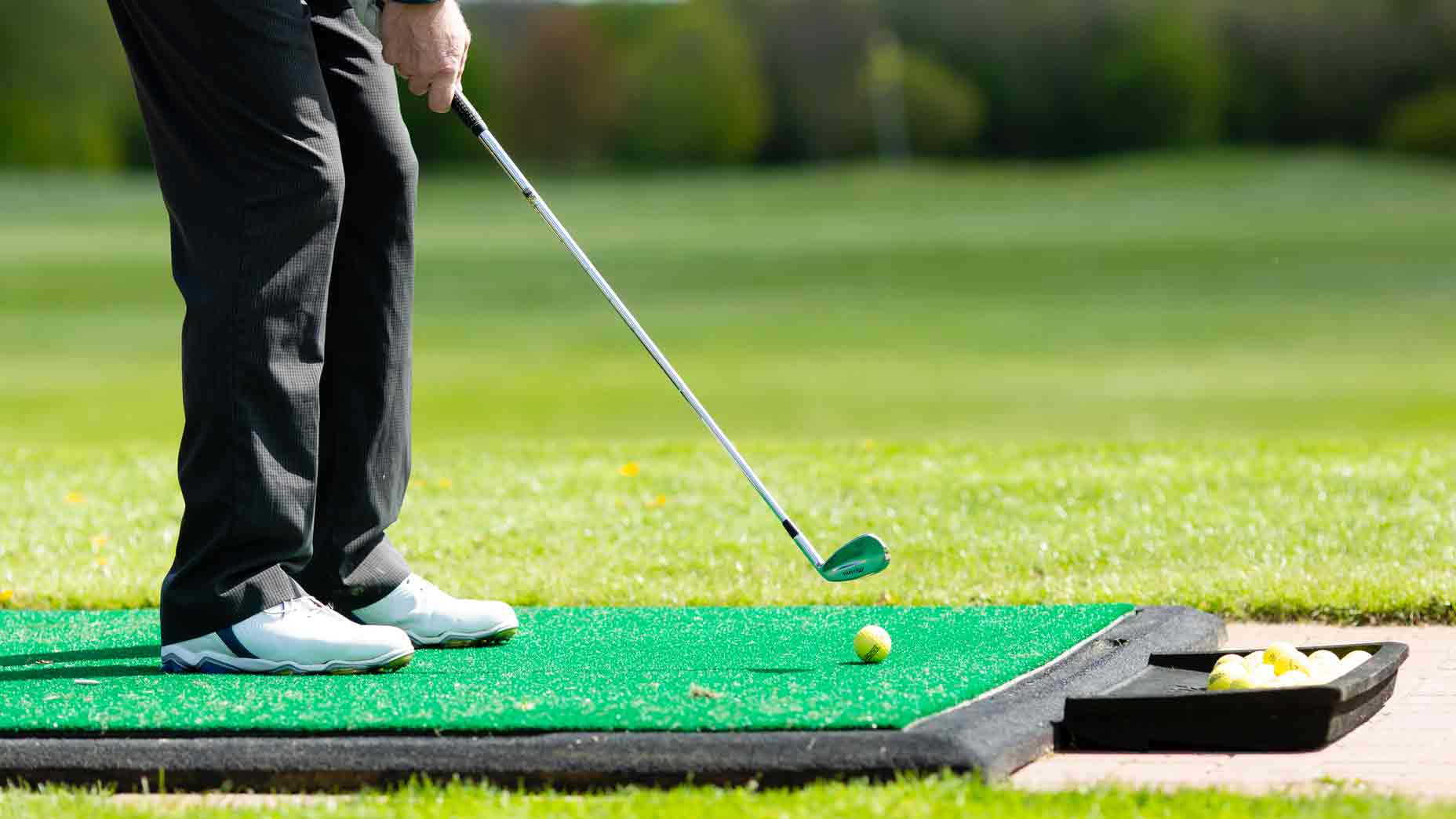Golf Logo
How practicing in slow-motion can help improve your swing
SHARE
- Share on Facebook
- Share on Twitter
- Share by Email
InsideGOLF instantly pays for itself
Learn More
Practicing in slow motion allows players to feel and see what the body and club are doing during the swing.
Getty Images
The golf swing takes about one and a half seconds to complete, and the clubhead travels over 50 feet as it circles the body. In a short amount of time, the golfer is shifting weight, producing wrist cock, using body rotation, and making postural changes.
With all that going on, it’s challenging to process all these movements and feelings at high speeds.
An excellent drill, however, is a slow-motion swing. Swinging slowly allows the player to feel and see what the body and club are doing during the swing. It’s beneficial when learning something new. The slower you move, the easier it is for the nervous system to adapt and learn new movements.
Practice from this key distance to finally break 80, says top teacherBy: Josh Berhow
I recommend viewing a YouTube clip featuring the legendary Ben Hogan practicing in super slow-motion. I guarantee you will think it was filmed in slow-motion. Rest assured, the waves rolling onto the shore in the background verify the clip’s authenticity.
Hogan’s daily practice routine consisted of this form of deliberate “chunking” as he programmed his mind and body to move precisely. Conditioned in his new habit, he could then pour on the speed while remaining in complete control.
Tour pros, elite juniors, and skilled, devoted amateurs understand the great value of doing isolated drills for skill development. However, many golfers are more interested in hitting balls at full-swing speed coupled with changing swing thoughts.
I recently read a quote from Arnold Palmer: “Perfect your swing slow and short before attempting to go fast and long.”
I recommend incorporating slow-motion swings into your practice routines. As you feel comfortable with the changes, incrementally increase the speed of the swing.
Kevin Sprecher is a GOLF Top 100 Teacher and is the director of instruction at Sleepy Hollow GC in Briarcliff Manor, N.Y.

Golf.com Photographer